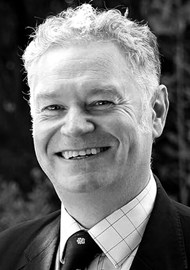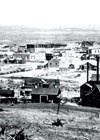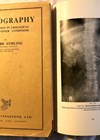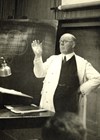In this series of articles, I am going to show you some of the exhibits contained in the Museum of Urology, hosted on the BAUS website (www.baus.org.uk).
One of the reasons for the creation of the Museum of Urology was to bring together collections of urological instruments from hospitals and private collections throughout the country, so anyone could share them and see them easily.
These collections, both large and small, have been photographed so they can remain in their hospitals or with their owners, whilst also being showcased in the Museum. Some have been kindly donated to the museum for safekeeping and future study. Recently two boxes of instruments and pictures were donated by the family of Philip Clark, a former consultant urologist from Leeds. This generous donation led me to think about the history of urology in Leeds, which is rich, long and important within the history of British urology. Some of the pieces donated helped to illustrate this history.
Leeds began as a small village at a ford crossing the river Aire. Indeed, it probably derives its name from that lively waterway, meaning ‘People of the boiling river’. Somehow escaping the Conqueror’s ‘Harrying of the North’ in 1069, it became a small town by charter of King John in 1207, but the Industrial Revolution, in particular the manufacture of cloth there, led to a population explosion. Leeds is now the largest city in Yorkshire. Leeds’ oldest hospital, the General Infirmary, began in a house for the relief of the sick in 1767. The first hospital was built in 1771. Several surgical families held sway in the Leeds hospitals in the 18th and 19th centuries, including the Heys, the Teales and the Wheelhouses.

Figure 1: Silver and rubber catheters from the Clark collection. William Hey described the used of both silver and flexible catheters for treating retention.
William Hey (1736–1819), one of the first surgeons of the Infirmary, was born in Pudsey, the grandson and great grandson of a surgeon and a physician on his mother’s side. Despite losing the sight in one eye aged four due to a penknife accident, he was a good surgeon. His name is still remembered in the eponyms for his cranial saw, infantile hernia and foot amputation. His son and grandson, both Williams, continued the Hey’s Leeds surgical dynasty. In the three editions of his book, Practical Observations in Surgery, William Hey wrote on retention of urine, describing his methods of passing catheters (Figure 1), cancer of the penis, noting its relationship to congenital phimosis, and lithotomy in women avoiding incontinence.
Thomas Pridgin Teale (1801–1867) was born in Leeds, the son of Thomas Teale, also a Leeds doctor. He was educated at the United Borough Hospitals gaining his MRCS in 1823. He was elected surgeon to the Leeds Public Dispensary in 1824, then in 1833 surgeon to the Leeds General Infirmary and honorary surgeon in 1864. Despite, like Hey, losing an eye as a child (this time from a chemistry experiment which went explosively wrong) he was said to excel in lithotomy and lithotrity. Teale invented a useful gorget for perineal lithotomy (Figure 2). He died on 31 December 1867. His son, also named Thomas Pridgin Teale (1831–1924), continued his surgical legacy at the Infirmary.

Figure 2: Teale’s Gorget; Teale invented a new gorget for perineal lithotomy. It subsequently was very useful in Wheelhouse’s new stricture operation.
The fabulously named Claudius Galen Wheelhouse (1826–1909) was born at Snaith in Yorkshire, on 29 December 1826. In 1851, he was elected surgeon to the Leeds Public Dispensary and demonstrator of anatomy in the medical school, where he was successively lecturer on anatomy, physiology and surgery. He died at Filey on 9 April 1909. Wheelhouse devised an operation to open difficult urethral strictures using a specially designed probe and Teale’s gorget, to cut through the strictures to access the bladder.
Arthur Fergusson McGill (1846–1890) was appointed resident medical officer to the Leeds Infirmary in 1869 and in 1874, surgeon to the Leeds Public Dispensary as well as demonstrator in anatomy in the Leeds School of Medicine. In 1882 he was elected assistant surgeon at the Infirmary and in 1884 full surgeon. He became professor of surgery in 1887. McGill is best known for establishing prostatectomy by the suprapubic operation. He was the first surgeon to carry this out in Great Britain, on 24 March 1887 on 53-year-old blacksmith Edward Ward. Whilst operating for bladder stones, he saw a tumour at the bladder neck and twisted it off. His assistant, Berkley Moynihan, later Lord Moynihan of Leeds (1865–1936) examined this histologically and realised it was prostate and not a bladder tumour. McGill was quick to recognise the potential of this approach and carried out his first case of purposeful prostatectomy before the previous patient was discharged. Then he, and his colleagues in Leeds, performed quite a few in quick succession. According to Moynihan, Mr Edward Atkinson (1830–1905) was the first to totally enucleate the prostate on 15 December 1887; this was then done by McGill on 17 December; the Leeds surgeons were certainly doing complete enucleations in the late 1880s (Figure 3). In 1886 he began to suffer from diabetes complicated by carbuncles, and he died on 21 November 1890.

Figure 3: McGill began the movement for open prostatectomy subsequently advanced by Freyer and Millin. This is Pyrah’s modified bladder retractor to improve access in open prostatectomies and other pelvic surgery.

Figure 4: Early Braasch direct cystoscope used by Pyrah. There was no lens system in this, just a plain glass window, which can be seen in the centre.
Leslie Pyrah (1899–1995) was appointed honorary assistant surgeon to the Infirmary in 1934. A general surgeon, he always had an interest in urology which probably explains why early cystoscopes are in this collection (Figure 4). He pioneered urology as a specialty and in 1950 gave up general surgery for pure urology, this was almost unheard of. He was one of the early British pioneers of the cold punch (Figure 5).

Figure 5: Gershom Thompson prostatic punch Pyrah was an early British pioneer of the prostatic punch procedure.
In 1956, Pyrah took up the first ever chair in urological surgery in the UK, at Leeds University. He set up the Medical Research Council Unit for the Study of Mineral Metabolism at the Leeds General Infirmary as well as the first renal haemodialysis unit in the UK, which was run by Frank Maudsley Parsons (1918–1989). Pyrah was also the founder of the Leeds Blood Transfusion Service, establishing a list of volunteer donors in the city in 1931; this was one of the earliest regional services.
Another Leeds surgeon working with Pyrah was Fred Rapor (1913–1966). Frederick Peter Raper was born in Grassington, Yorkshire, in 1913. Like Pyrah, he also gave up general surgery to become a pure urologist when the Leeds department opened in October 1950. That same year, with a travelling fellowship from United Leeds Hospitals, he spent a year training in Anne Arbor, Michigan with Reed Nesbit (1898–1979). Rapor subsequently modified the classic Nesbit resectoscope and, according to Pyrah, was an excellent resectionist.

Figure 6: Although Clark promoted radical cystectomy, it was still seen as high-risk surgery. Many smaller tumours were still removed by open cystotomy, these Fergusson forceps held the tumour whilst it was excised by diathermy needle, they lie on an illustration of a bladder tumour removed by Pyrah in 1949.
Philip Beckford Clark (1928–2024) succeeded Leslie Pyrah in 1964, he had a renowned reputation for training urologists from the UK and overseas and wrote Operations in Urology (1985) with his trainees. His RSM Presidential Address, on 27 October 1983, was on radical cystectomy, where he showed that 25% of patients with lymph node involvement could achieve five-year survival (Figure 6). He was also principal investigator for the first MRC trial into the role of radiotherapy and orchidectomy in the management of advanced prostate cancer.
Leeds has played a significant part in the history of British urology not least in providing presidents to BAUS; Leslie Pyrah (1961–1963), Bob Williams (1990–1992) and Adrian Joyce (2010–2014); and the RSM Urology Section; Philip Clark (1983–1984).









